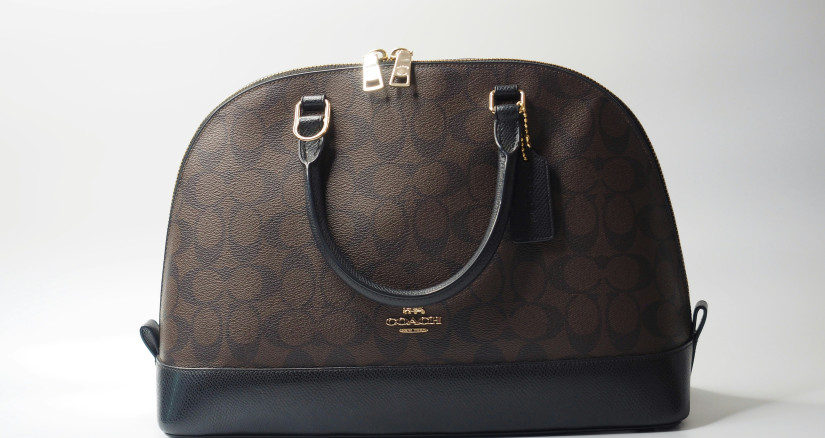
Coach’s Retail Revival: Lessons from a 10% Sales Surge
In previous articles, I have highlighted the importance of understanding not only your consumer but their buyer’s journey as well. Taking that one step further, it is also crucial to understand what it takes to win with your consumer and how that impacts your sales and channel strategy. Regardless of whether your strategy is e-commerce, omnichannel, or brick and mortar, the fact remains: retail is a dominant force to be reckoned with and should not be ignored.
This said, can brick and mortar still win? And if so, how?
As a long-time veteran in the CPG world, I always fall back on the “experiences” retail outlets deliver, more commonly referred to as the Experience Economy. For a refresher, the Experience Economy, introduced by B. Joseph Pine II and James Gilmore in their book, The Experience Economy, proposes that businesses should view their operations as a performance, where goods serve as props and services create the stage for engaging experiences. It is the value of these experiences to the individual that determines the worth of the offering and the business itself, helping to prevent goods or services from becoming commoditized with little differentiation.
Winning models I've highlighted in past articles all share a commitment to creating memorable customer experiences, which aligns perfectly with the principles of the Experience Economy—a concept that Coach has masterfully leveraged to succeed with Gen Z shoppers. The intent in designing Coach Play was to capture experiences first and foremost, based on the local store environment, keeping it playful for their consumer and differentiating itself as not just another retail concept. In short, Coach exemplifies the very nature of this concept and is winning with our youngest consumers, a generation that has historically not engaged in the luxury segment the same way as past generations.

Photo by Kelsey Shotit
How Are They Doing This?
It starts with Coach Play’s “fully immersive” stores. Coach Play stores were designed with the intent to capture hyper-localized experiences that offer a playful approach to store design, focusing on local community integration and unique experiences for customers.
These retail outlets have seen impressive levels of dwell time—the length of time a customer spends in a store—with different components translating to varying levels of engagement. A larger number of Gen Z shoppers enter Coach Play stores compared to typical Coach stores. Among those who enter, their dwell time is often four- to eight-times greater in Coach Play stores than in typical Coach stores—and it’s even higher in Asia.
Their strategy? “Build the stores with [dwell time] in mind,” Giovanni Zaccariello, the brand’s SVP of visual experience, told Glossy during this week’s Shoptalk conference. “There’s a sense of discovery, there are things for them to do, and there’s more space for people to just hang out.”
Coach Play locations are typically designed with 10% to 15% of the store providing an experience, such as a customization station or a coffee shop. However, at Coach Play APW, which opened in Malaysia in October, 50% of the store is focused on experiences. Housed in an old magazine printing company, reflecting Coach’s signature celebration of craft, it allows customers to customize a tote or screen-print a T-shirt, for example. Shoppers spend eight times more time there than in any other store in Malaysia.
Coach Play stores also host events every Friday through Sunday. These events typically feature music, such as a DJ, a hospitality element including food from local cookie or ice cream vendors, and artists or skilled craftsmen to customize shoppers’ Coach pieces. The components are usually programmed by the store manager, with guidance from Coach’s events team, to ensure a local feel. On U.S. college campuses, a more experience-focused version of Coach Play attracted 12-times the average dwell time of local stores through the inclusion of an ice cream shop and a customization station for Coach’s Tabby bag.
Why are They Doing This?
“Gen Z penetration is our No. 1 KPI; recruiting Gen Z is our No. 1 focus,” Zaccariello told Glossy. “By offering them experiences, they’re spending time on the actual sales floor. Then that generates sales. Both the emotional bond and the purchase are important to us.”
Higher in-store dwell times have been linked to higher sales, but for most brands, it’s not a top metric of focus.
“The same information [for stores] wasn’t available for a long time, and then it wasn’t the brands’ priority—they just wanted to measure a store's success by sales, maybe by foot traffic,” added Sarah Engel, president of marketing agency January Digital, in the Glossy article. “But Coach is going one level deeper, in terms of truth-telling… They’re doing long-term brand building and enabling deeper-level metrics for their stores, including metrics specific to Gen-Z shoppers, which makes a lot of sense.”

Photo by Unai 82
The Results
Reported in February during the second quarter of its fiscal 2025, Coach’s sales increased by 10% year-over-year to $1.7 billion. Sales of the brand’s Tabby bag doubled compared to the same period last year. Overall, its parent company, Tapestry, acquired 2.7 million new customers in North America, half of whom were Millennials or Gen Z.
What’s in It for Me?
As I mentioned earlier, regardless of your strategy, it is vital to understand your consumer and their buyer’s journey. Coach identified their consumer, their journey, the gaps in the current solution, and created a retail model to satisfy that unmet need while delivering an exceptional experience with abundant economies.
Wondering how BSM Partners can assist you in becoming the next Coach-level success? Let our Branding, Strategy, and Marketing practice help define your consumers, their values, and more importantly, the experiences they are seeking that have not yet been satisfied. Led by industry veteran Michael Johnson, this practice focuses on understanding the evolving marketplace and changing consumer behaviors. We work with brands to develop market strategies that are connected to consumer needs. Further, our Business Transformation and Leader Development Practice, which cultivates high-performing leaders who can inspire and motivate teams, is more important than ever. Led by Dr. Frank Niles, PhD, Business Psychologist at BSM Partners, this practice team can help develop and retain the leaders needed to elevate your business.
From business transformation and leadership development to consumer research and strategy, our comprehensive expertise helps brands, retailers, and services of all sizes make competitive comebacks and captivate consumers.
Follow us on LinkedIn for the latest updates on all things happening here at BSM Partners.
About the Author
Eric Rittenhouse works at BSM Partners as Business Development Manager. His areas of expertise include business development, sales and trade marketing while helping brand companies uncover and execute on opportunities to strategically dominate their niche in the consumer product space. He has completed the Blue Ocean Practical Introduction certificate by the Blue Ocean Academy and is Action Selling Master Certified by Action Selling and The Sales Board.
This content is the property of BSM Partners. Reproduction or retransmission or repurposing of any portion of this content is expressly prohibited without the approval of BSM Partners and is governed by the terms and conditions explained here.